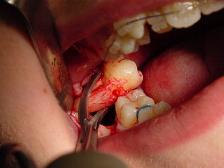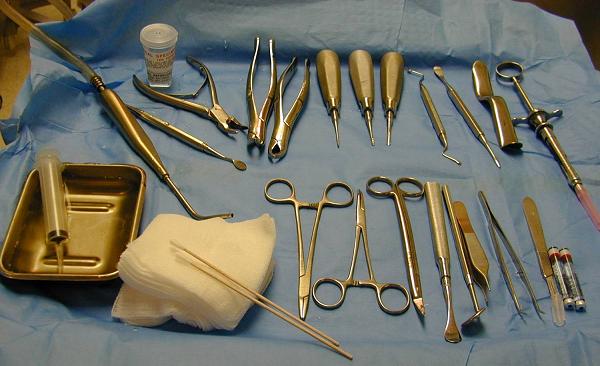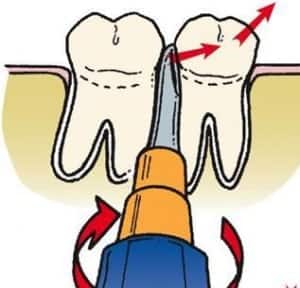What is oral and maxillofacial surgery?
Oral refers to our mouths, maxillofacial refers to our jaws and face. So oral and maxillofacial surgery is the surgical treatment of disease, injuries or defects in the face, jaws and hard and soft tissues of the mouth. This surgical specialty is internationally recognized and in most countries around the world (including the United States, Australia and Canada) is recognized as a specialty of dentistry. Some of the most common oral surgery procedures are the extraction of teeth (including wisdom teeth), orthodontic surgery, preprosthetic surgery and placement of implants.
Why does my dentist refer me out of office for oral surgery?
Typically, general dentistry offices will refer patients to specialist as needed. For example, let’s say you come into Affiliated Dentists with a pain in the very back of your jaw on both sides. The doctor does an exam, looks at your xrays and recommends that you have your wisdom teeth extracted. Instead of laying you back, giving you a few shots in the mouth and grabbing the pliers to pull those 4 teeth out himself, your doctor will write out a referral for you to see an oral surgeon. That’s because our office is equipped for general dentistry and the few things some of our doctors specialize in such as cosmetic procedures. Oral surgery is not one of those specialties. Oral surgery is complex and requires years of extensive training, medical knowledge and very specific instruments. Granted, in some specific situations one of our doctors can extract teeth, most of the time those teeth are either baby teeth, or already loosened and on its way out. But for the most part, it’s better to refer the patient to an expert.
How are teeth extracted during oral surgery?
There are two types of oral surgery extractions, simple and surgical.
- Simple extractions are performed on teeth that are visible in the mouth, done usually under local anesthetic and require only the use of instruments to elevate and/or grasp the visible portion of the tooth. The tooth is lifted with a tool called an elevator and dental forceps are used to rock the tooth back and forth to break the periodontal ligament.
- Surgical extractions involve the removal of teeth that cannot be easily accessed either because they have broken under the gumline or because they have not fully erupted yet. Surgical extractions almost always require an incision. In a surgical extraction, the doctor may elevate the soft tissues covering the tooth and bone. They may also remove some of the overlaying and/or surrounding jawbone tissue with a drill or osteotome. The tooth may be broken into pieces for easier removal.

What are the specialized tools needed for proper oral and maxillofacial surgery?
Oral surgery may use a lot of the same tools you’ve seen at your dentists office– scalers, picks, mirrors and probes. But they also have their own special tools. These instruments include elevators, dental forceps and chisels.

Elevators are considered the workhorse of an oral surgery work tray. They are used to break the periodontal ligament to loosen the tooth when forceps would be too cumbersome. Surgical elevators come in many types, usually named after the dentist who originally designed it.
Three of the most common elevators are:
- Coupland’s Gauge – which is not technically and elevator but a bone chisel. However, the instrument is popularly used as a straight elevator for removing roots or for driving into the periodontal ligament to expand the bone socket.
- Warwick James’ Elevator – slim shaft and a beak with a rounded end. This elevator is manufactured in sets of three: straight, curved to the right and curved to the left.
- Cryer’s Elevator – sharp pointed triangular beak set to a right angle to face either left or right of the shaft. These elevators are particularly useful in removing lower molar roots.
An elevator is wedged between the tooth to be extracted and the adjacent bone, then with a steady rotating motion, the elevator compressed the space between the bone and tooth.

There are three kinds of forceps– surgical, maxillary and mandibular (upper and lower). Forceps are used to grasp the visible part of the tooth and rock it back and forth. Sometimes this is used in conjunction with an elevator. Sometimes it is used after the elevator have broken the periodontal ligament. Once the ligament is broken, the forceps are used much like a pair of pliers to pull the whole, or part of the tooth out.
Chisels are used to remove bone from around an impacted tooth, chisels can be either single-beveled or bi-beveled with two sharp angled sides. They can also be used to split teeth during the extraction.
What kind of oral surgery training does my oral surgeon have?
Just like any other person who wants to become a dentist, an oral surgeon must graduate from an accredited dental school. After graduation, a certified dentist who wishes to specialize in oral surgery must then go on to complete a minimum of four years in a hospital based surgical residency. Training alongside medical residents, they practice internal medicine, general surgery and anesthesiology, they also spend time in otolaryngology, plastic surgery and emergency medicine. Oral surgery training focuses almost exclusively on the hard and soft tissues of the face, mouth and jaws.
After all this studying and practicing, oral surgeons become well prepared to:
-
Manage diseases of the teeth and their supporting soft and hard tissues.
-
Surgically reconstruct inadequate bone structure in the jaw area.
-
Evaluate, plan a course of treatment and place dental implants to replace one, two or a mouthful of missing teeth.
-
Treat head and neck trauma and injuries to the face, jaws, mouth and teeth.
-
Diagnose and treat facial pain.
-
Diagnose and treat oral cancer and other diseases in the maxillofacial region.
-
Perform corrective jaw surgery to improve the function and appearance of patients with such conditions as cleft lip and palate and other congenital defects.
-
Diagnose and surgically treat obstructive sleep apnea.
- Perform facial cosmetic procedures to enhance facial appearance and function.
How long does it take to heal from an extraction, and what are some of the complications?

Immediately following the extraction of teeth, a patient will experience bleeding, or oozing. Pressure is applied by biting on a gauze pad allowing a blood clot to form. After about 30 minutes of continuous pressure, the bleeding should stop. The gum tissue and the tissue in the mouth around the extraction site may get a little swollen for a day or two after the extraction, as well. However, if the swelling makes you look like a chipmunk trying to store nuts in your cheeks, there may be more complications.
Some of the more serious complications that can come from an extraction are:
- Infection – it is an open wound after all.
- Swelling – remember looking like a chipmunk is not a good sign.
- Bruising – this can occur at the extraction site, as well as along the cheeks and mouth.
- Nerve injury – this can happen when a facial nerve is too close to the tooth being extracted.
- Dry socket – the most common complication. This happens when the blood clot is disrupted or swelling starts inside the extraction site.
Oral surgery is a common, but complicated specialty of dentistry. It requires years of education, training and dedication. When a patient is referred from a general dentist to an oral surgeon, it’s not because the general dentist is being lazy, doesn’t want to do the extra work or doesn’t have the time. It’s because they may not have the proper training and most likely don’t have the proper instruments. When you are referred to an oral surgeon, trust that you are in good hands!